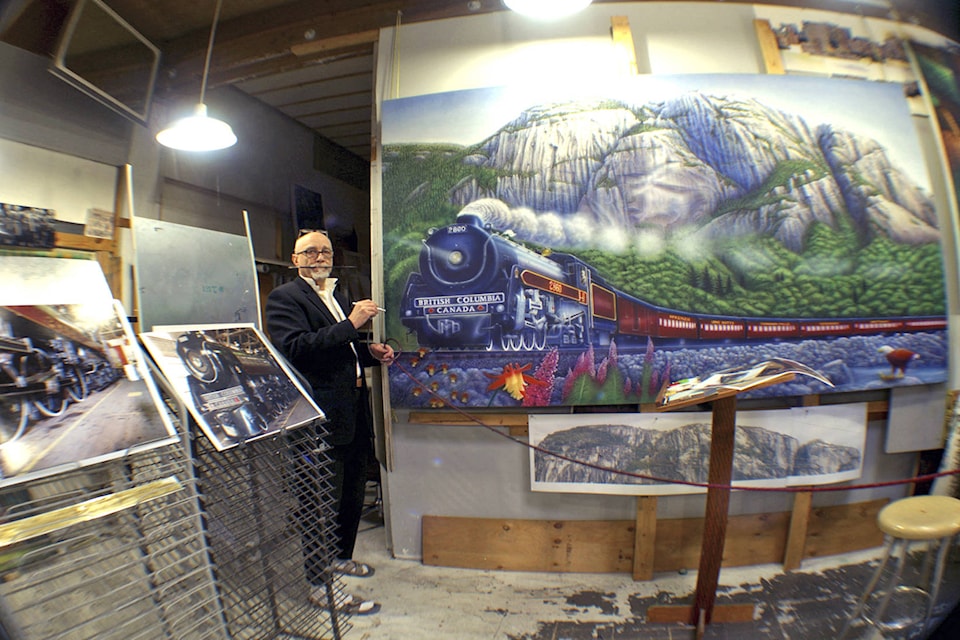Leah Blain
Contributor
For an artist, Carl Chaplin has an unusual attitude towards his profession.
“We’re constantly lying in art. Like a good play, a good story – it’s not accurate – so it’s a lie, but in the overall context it helps you see or understand reality. It lets you see the truth when in fact it’s still a little lie.”
But then again, Chaplin is an unusual artist. Using the latest computer technology and airbrushes, he holds unwaveringly to the ancient principles of classic art, the golden ratio, also known as phi. The golden ratio is a term used to describe how elements within a piece of art can be placed in the most esthetically pleasing way.
Chaplin was born in Windsor, Ont. but his family moved to Detroit after the Second World War because “all the jobs were in Detroit.” He loved drawing space ships, rockets, military tanks, and cars with his crayons.
“But I really liked to draw mushrooms. My family belonged to the nature club and we went for hikes and our leader was the main fungus expert in the University of Michigan. We would bring them back and lay them out, I would get my sketch pad and draw mushrooms. They were so fascinating.”
Chaplin first saw real mountains when his family was on a road trip; he was about 14 years old.
“We were in our station wagon and the mountains were about 100 kilometres off. Dad stopped the car and we could see them on the horizon. I was sold.”
He knew he wanted to live in the mountains but it would be a few years before he would move to British Columbia.
After high school Chaplin apprenticed at the two largest art studios in the world: New Center Studios and McNamara’s, in Detroit. He saved up enough money to buy his own airbrush and moved to Vancouver in 1970. It was a good decision.
“There was only one other airbrush (artist) in Vancouver. He went to Victoria and I had to the city to myself for five years.”
Jobs were plentiful and he was part of the team that created the ‘Super Natural British Columbia’ tourism slogan and look.
Increasingly Chaplin was uneasy about using his art to do things like make beer foamier in advertising campaigns and he began to use it more for causes he believed in. He donated work to organizations like the David Suzuki Foundation, and to raise awareness for environmental, ecological, climate, and social issues. He did a series of paintings depicting nuclear destruction, Art Nuko. The controversy it created back in the 1980s hit him in the pocketbook.
“I would have done better professionally and financially if I just painted mountains, flowerscapes and portraits,” he says, “but I feel pride that I’ve accomplished something.”
Would he have changed anything? He reflects for only a moment.
“I would have painted more, faster. If I could do the show over again I would have hit them harder.”
In his studio in Lee Creek, Chaplin has an impressive number of canvases, each with its own stunningly beautiful vibrancy. The subject matters range from trains and whales to the surreal and nuclear war, and his still-loved theme of mushrooms. Every single piece of art starts with a sketch no bigger than his thumbnail. Then he scans it, enlarges it on his computer 162 per cent (the golden ratio) and prints it onto high quality art paper. He paints it completely and keeps enlarging the image. He uses his airbrush, pencils, and traditional paint brushes.
Art isn’t just an occupation or vocation for Chaplin, it answers life’s most important questions.
“There are three ways to think about the world, through the lens of science or spirituality or art. I thought art was the best choice.”
